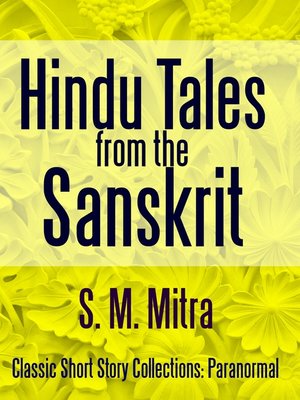
Sign up to save your library
With an OverDrive account, you can save your favorite libraries for at-a-glance information about availability. Find out more about OverDrive accounts.
Find this title in Libby, the library reading app by OverDrive.



Search for a digital library with this title
Title found at these libraries:
| Library Name | Distance |
|---|---|
| Loading... |
Delightful classic stories from ancient India. Includes questions after each chapter to enhance understanding and help readers apply the lessons learned.
Hindu mythology is large body of traditional narratives related to Hinduism as contained in Sanskrit literature Ancient Tamil literature several other works, most notably the Bhagavata Purana, claiming the status of a Fifth Veda and other religious regional literature of South Asia. As such, it is a subset of mainstream Indian and Nepali culture. Rather than one consistent, monolithic structure, it is a range of diverse traditions, developed by different sects, people and philosophical schools, in different regions and at different times, which are not necessarily held by all Hindus to be literal accounts of historical events, but are taken to have deeper, often symbolic, meaning, and which have been given a complex range of interpretations.
Thanks to Mr. S. M. Mitra, the well-knownHindu psychologist and politician, who has done so much to draw moreclosely together the land of his birth and that of his adoption, I amable to bring within reach of English children a number of typicalHindu Tales, translated by him from the Sanskrit, some of them culledfrom the ancient classics of India, others from widely separatedsources. The latter have hitherto been quite inaccessible to westernstudents, as they are not yet embodied in literature, but have beentransmitted orally from generation to generation for many centuries.
Thesetales are not only of a kind to enchain the attention of children.They also illustrate well the close affinity between the two chiefbranches of the great Aryan race, and are of considerable ethicalvalue, reflecting, as they do, the philosophy of self-realisationwhich lies at the root of Hindu culture. They have been used fromtime immemorial by the best teachers of India as a means of buildingup the personalities of the young and maintaining the efficiency ofthe adult. They serve in fact as text-books of the unique system ofMind-Training which has been in use in India from remote Vedic times,the root principle of which is as simple as it is effective.
Hinduchildren become familiar at their mothers' knees with these stories,and are trained to answer questions on them, subtly chosen to suittheir ages and call into action their mental faculties. Appealing tothem as an amusing game, in which they vie with each other in tryingto solve the problems presented for their consideration, the boys andgirls, who are educated together till they are ten or twelve yearsold, early learn to concentrate their attention; whilst thesimultaneous development of all their powers is encouraged and theyare, imperceptibly to themselves led to control their thoughts andemotions from within, instead of having to obey orders which they donot understand from without. They realize indeed, whilst still in thenursery, the ideal suggested by the sage Vidura in the Mahabharata:"Seek to know thyself by means of thyself, keeping thy mind,intellect and senses, under control; for self is thy friend as it isalso thy foe."
About the Author: Siddha Mohana Mitra born in 1856 and died in 1925 Siddha Mohana Mitra was born in 1856 and died in 1925. He was of Hindu-Bengali origin and had lived in Hyderabad for a number of years. Mitra had been editor of the Deccan...







